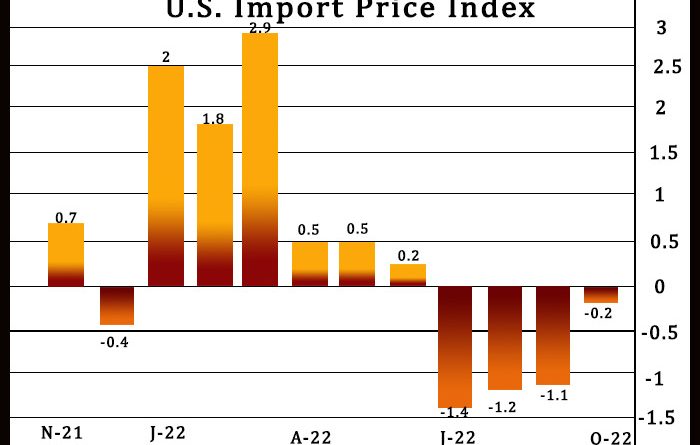U.S. Import Prices Show Modest Decrease In October
A report released by the Labor Department on Wednesday showed a modest decrease in U.S. import prices in the month of October.
The Labor Department said import prices edged down by 0.2 percent in October after tumbling by a revised 1.1 percent in September.
Economists had expected import prices to fall by 0.4 percent compared to the 1.2 percent slump originally reported for the previous month.
The dip in import prices was partly due to a continued decline in prices for fuel imports, which slumped by 1.3 percent in October after plunging by 7.0 percent in September.
Prices for non-fuel imports edged down by 0.1 percent in October after slipping by 0.3 percent in September, reflecting lower prices for consumer goods, foods, feeds, and beverages, and non-fuel industrial supplies and materials.
The report also showed the annual rate of growth in import prices slowed to 4.2 percent in October from 6.0 percent in September. The jump reflected the smallest year-over-year increase since February 2021.
“Today’s import price report is another confirmation that inflation pressures within the economy are softening, as slowing global demand and higher rates help to push prices lower,” said Matthew Martin, U.S. Economist at Oxford Economics.
He added, “However, despite the encouraging signs, the Fed will remain resolved in their efforts to further slow the economy and are expected to increase rates a further 50bps in December.”
Meanwhile, the Labor Department said export prices dipped by 0.3 percent in October after plunging by a revised 1.5 percent in September.
Export prices were expected to decline by 0.4 percent compared to the 0.8 percent decrease originally reported for the previous month.
Prices for agricultural exports slumped by 1.0 percent amid a steep drop in soybean prices, while prices for non-agricultural exports fell by 0.3 percent.
Export prices in October were up by 6.9 percent compared to the same month a year ago, unchanged from the year-over-year growth seen in September.
Source: Read Full Article

